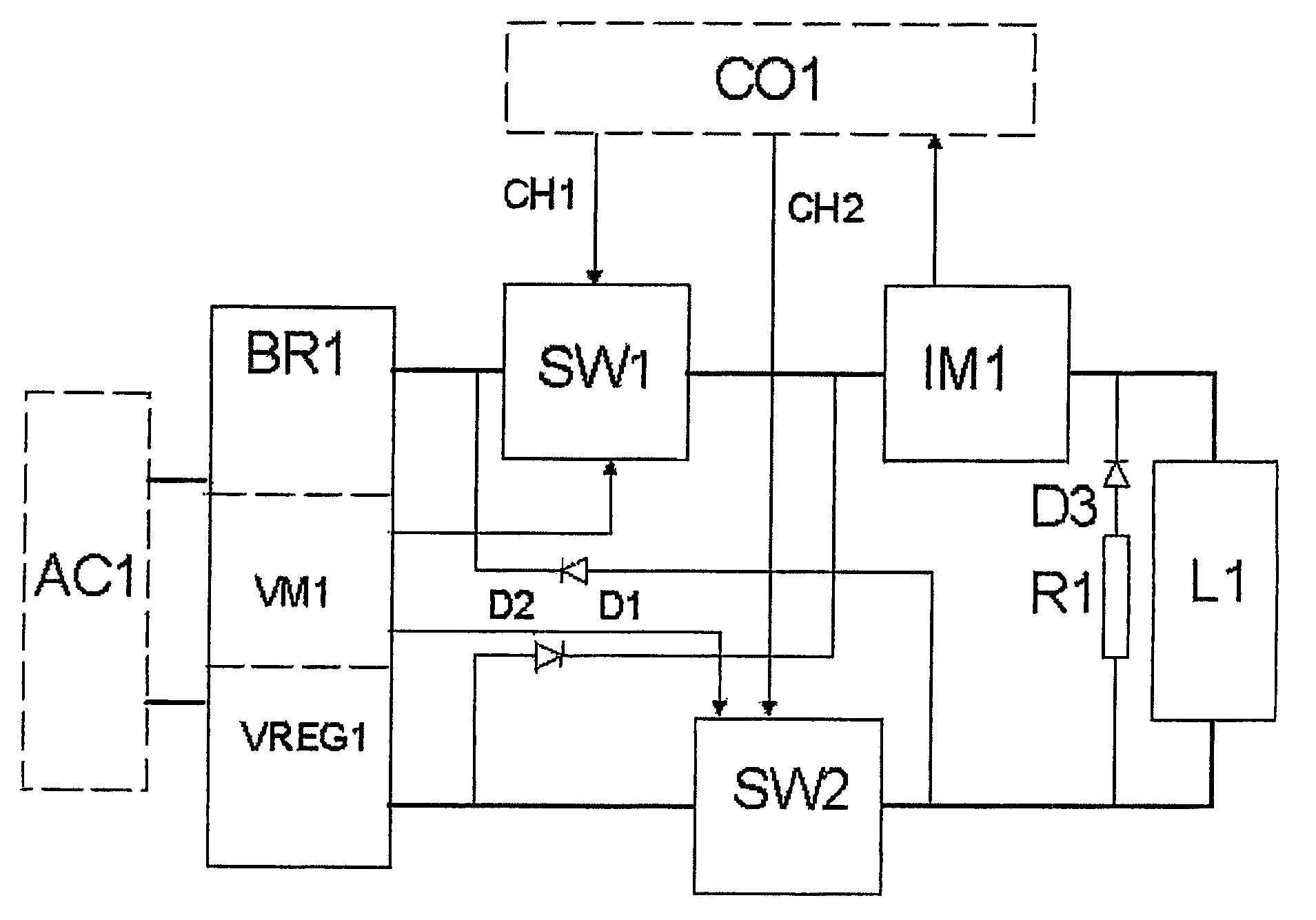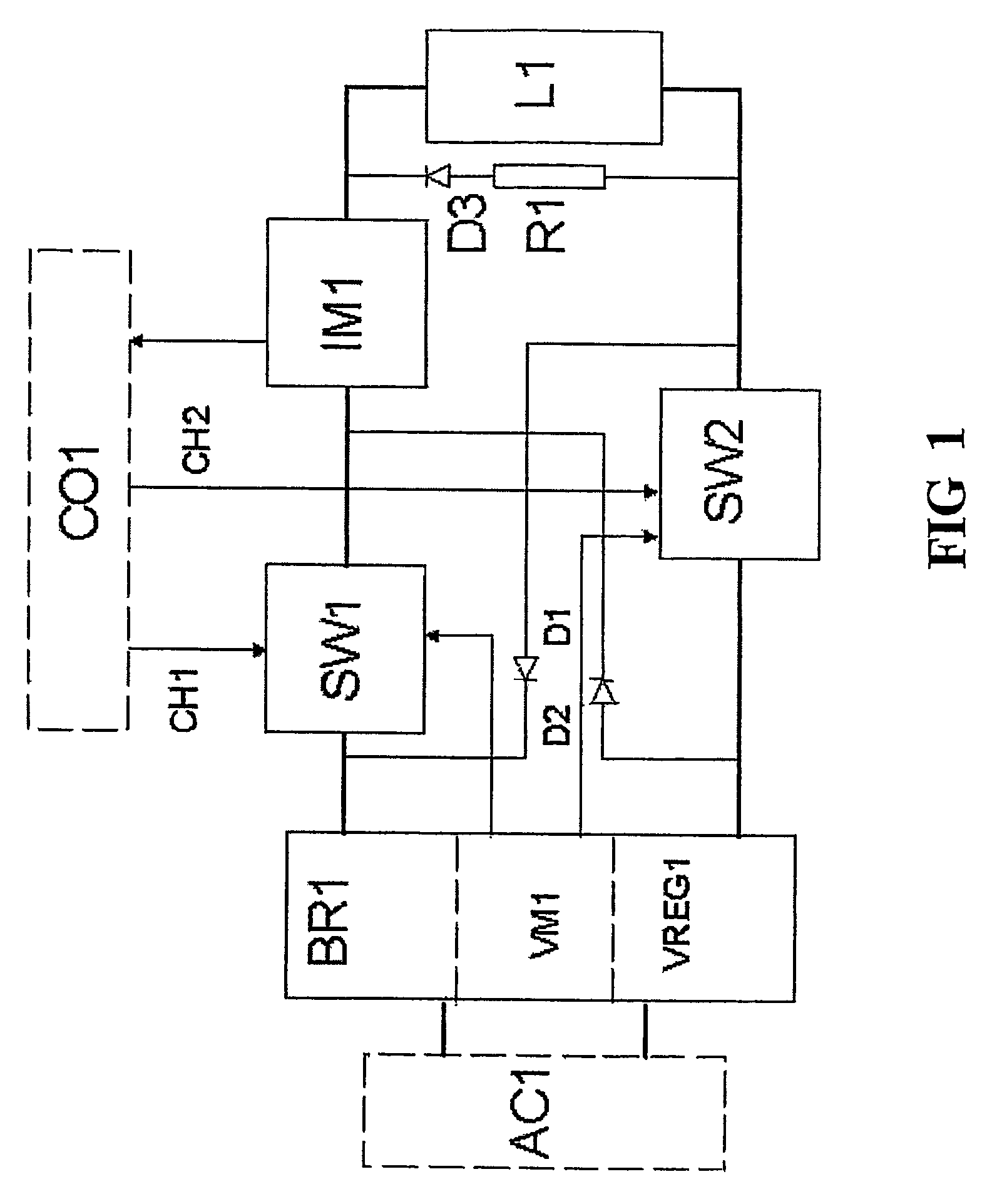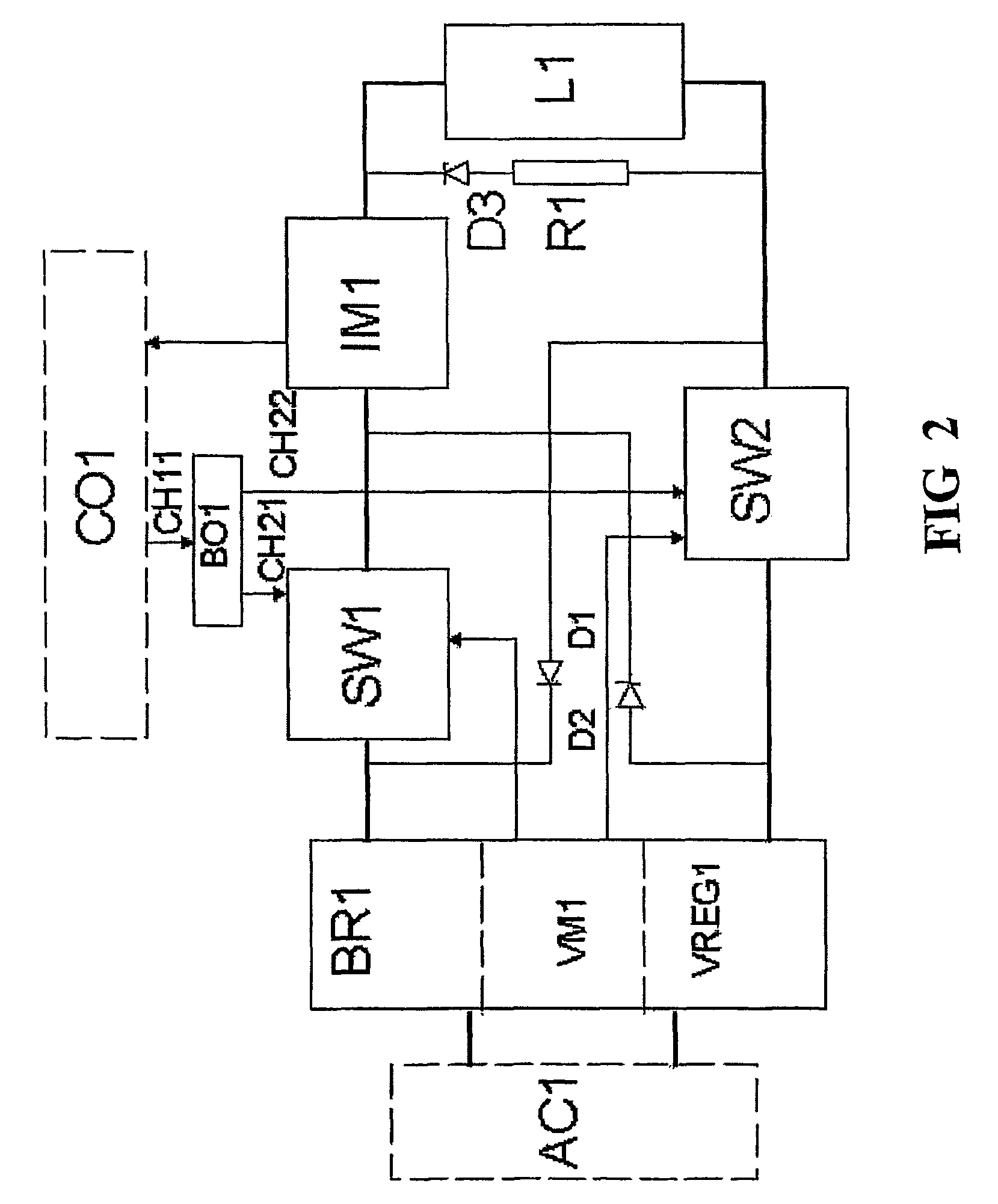Elevator brake and brake control circuit
- Summary
- Abstract
- Description
- Claims
- Application Information
AI Technical Summary
Benefits of technology
Problems solved by technology
Method used
Image
Examples
Embodiment Construction
[0023]FIG. 1 represents a elevator brake control circuit, which contains a direct-current circuit comprising a brake coil L1, a rectifier bridge BR1 connected to an alternating-current network AC1, which may be e.g. a 230 V safety circuit, and semiconductor switches, e.g. IGBTs, SW1 and SW2, which are controlled by an elevator drive control unit CO1, each via a separate channel CH1 and CH2. In addition, the direct-current circuit comprises flywheel diodes D1 and D2, through which the current fed by the brake coil inductance flows when only one of the semiconductor switches is in the conducting state. In addition, the circuit comprises a series connection of a resistor R1 and a diode D3, which is connected in parallel with the brake coil L1 and through which the current generated by the large inductance of the coil L1 in a braking situation can be passed.
[0024]Moreover, the circuit comprises a direct current measuring unit IM1 producing current data, which is input to the drive contr...
PUM
 Login to View More
Login to View More Abstract
Description
Claims
Application Information
 Login to View More
Login to View More - R&D
- Intellectual Property
- Life Sciences
- Materials
- Tech Scout
- Unparalleled Data Quality
- Higher Quality Content
- 60% Fewer Hallucinations
Browse by: Latest US Patents, China's latest patents, Technical Efficacy Thesaurus, Application Domain, Technology Topic, Popular Technical Reports.
© 2025 PatSnap. All rights reserved.Legal|Privacy policy|Modern Slavery Act Transparency Statement|Sitemap|About US| Contact US: help@patsnap.com



